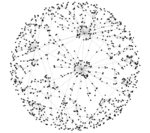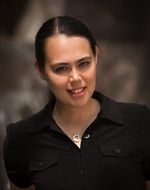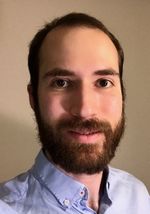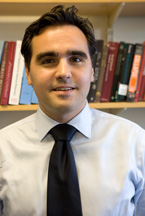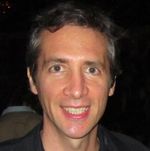SFI Networks Short Course 201 - Faculty 2017
From Santa Fe Institute Events Wiki
| Networks Short Course 2017 |
SFI NETWORKS & BIG DATA SHORT COURSE ON COMPLEXITY
July 26-28, 2017 - Hyatt Centric Times Square, New York City, New York
DIRECTOR
Short Course Director Michelle Girvan
Michelle Girvan is an Associate Professor in the Department of Physics and the Institute for Physical Science and Technology at the University of Maryland, College Park. She is also a member of the External Faculty at the Santa Fe Institute. Her research operates at the intersection of statistical physics, nonlinear dynamics, and computer science and has applications to social, biological, and technological systems. More specifically, her work focuses on complex networks and often falls within the fields of computational biology and sociophysics. While some of the research is purely theoretical, Girvan has become increasingly involved in using empirical data to inform and validate mathematical models.
website
FACILITATOR
Short Course Facilitator David Darmon
David Darmon is a research scientist at the Uniformed Services University in Bethesda, Maryland. His research focuses on developing new analytical tools to facilitate understanding of dynamical processes that occur on networks. By realizing information theoretic analyses via nonparametric statistics, investigators can gain new insights into the organization of complex systems. He received his doctorate in Applied Mathematics and Scientific Computing from the University of Maryland, College Park in 2015.
website
Abstracts
"'Hands-On Activity: Network Data Analysis"'
For the first hands-on session, we will develop a workflow for analyzing data via networks and present key tools for doing so. With real world networks from entertainment, politics, and business, we will explore how to decide on appropriate network abstractions, collect and process data, visualize and perform exploratory data analysis, and extract relevant network statistics. In the process, we will gain experience in analyzing networks using Gephi and R.
—
Hands-On Activity: Modeling Network Diffusion with NetLogo
For the second hands-on session, we will learn how to simulate agent-based models using NetLogo. We will introduce the history of NetLogo and cover its central abstractions. Then we will dive into using NetLogo to model diffusion of information on networks, and learn how to design and analyze experiments in a computational environment, with an emphasis on model calibration and prediction.
—
Hands-On Activity: Complex Network Visualization
For the third hands-on session, we will explore various methods for analyzing and visualizing the micro-, meso- and macro-scale structure of multilayer networks. We will compare the insights gained using monolayer and multilayer approaches using real world data sets collected from online social media. In the process, we will gain familiarity with muxViz, a flexible open source tool for analyzing multilayer networks, and reinforce our knowledge of Gephi and R.
SPEAKERS CONFIRMED TO DATE
Damon Centola - Annenberg School for Communication - University of Pennsylvania
Damon Centola is an Associate Professor in the Annenberg School for Communication and the School of Engineering and Applied Sciences at the University of Pennsylvania, where he is Director of the Network Dynamics Group. Before coming to Penn, he was an Assistant Professor at M.I.T. and a Robert Wood Johnson Fellow at Harvard University.
His research interests include social networks, social epidemiology, and web-based experiments on collective intelligence and cultural evolution. His work has been published across several disciplines in journals such as Science, Proceedings of the National Academy of Sciences, American Journal of Sociology, and Journal of Statistical Physics. Damon received the American Sociological Association’s Award for Outstanding Article in Mathematical Sociology in 2006, 2009, and 2011. He was also awarded the Goodman Prize for Outstanding Contributions to Sociological Methodology, and the 2017 James Coleman Award for Outstanding Contributions to Sociological Theory. Damon was a developer of the NetLogo agent based modeling environment, and was awarded a U.S. Patent for inventing a method to promote diffusion in online networks. He is a member of the Sci Foo community and past fellow of the Center for Advanced Study in the Behavioral Sciences at Stanford University, and the Brookings Institution in Washington, D.C.
Popular accounts of Damon’s work have appeared in The New York Times, The Washington Post, The Wall Street Journal, Wired, TIME, CNN and other outlets. His research has been funded by the Robert Wood Johnson Foundation, the National Science Foundation, the National Institutes of Health, the James S. McDonnell Foundation, and the Hewlett Foundation. He is a series editor for Princeton University Press, and has a forthcoming book with Princeton, entitled How Behaviors Spread: The Science of Network Diffusion.
The Network Dynamics Group can be found at: http://ndg.asc.upenn.edu
Abstract
Diffusion in Social Networks: New Theory and Experiments
The strength of weak ties is that they tend to be long – they connect socially distant locations. Research on “small worlds” shows that these long ties can dramatically reduce the “degrees of separation” of a social network, thereby allowing ideas and behaviors to rapidly diffuse. However, I show that the opposite can also be true. Increasing the frequency of long ties in a clustered social network can also inhibit the diffusion of collective behavior across a population. For health related behaviors that require strong social reinforcement, such as dieting, exercising, smoking cessation, or even condom use, successful diffusion may depend primarily on the width of bridges between otherwise distant locations, not just their length. I present formal and computational results that demonstrate these findings, and then present an experimental test of the effects of social network topology on the diffusion of health behavior.
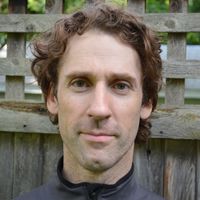
Peter Dodds - Professor, Director of the Vermont Complex Systems Center and More - University of Vermont
Peter Sheridan Dodds is a Professor at the University of Vermont (UVM) working on system-level problems in many fields, ranging from sociology to physics. He is Director of the UVM's Complex Systems Center, co-Director of UVM's Computational Story Lab, and a visiting faculty fellow at the Vermont Advanced Computing Core. He maintains general research and teaching interests in complex systems and networks with a current focus on sociotechnical and psychological phenomena including collective emotional states, contagion, language, and stories. His methods encompass large-scale sociotechnical experiments, large-scale data collection and analysis, and the formulation, analysis, and simulation of theoretical models. Dodds's training is in theoretical physics, mathematics, and electrical engineering with extensive formal postdoctoral and research experience in the social sciences. Dodds has received funding from NSF, NASA, ONR, and the MITRE Corporation, among others, notably being awarded an NSF CAREER by the Social and Economic Sciences Directorate.
CV website
Abstract
Data-driven Explorations of the Ecology of Human Stories
In this talk, I will talk about our efforts at the Computational Story Lab to quantify human stories of all kinds. I'll present some examples of our "lexical meters"---online, interactive instruments that use social media and other texts to quantify population rates of a wide array of human behavior such as wealth, exercise levels, obesity rates, and sleep insufficiency. I will present evidence for how 10 diverse natural languages appear to contain a striking frequency-independent positive bias, describing how this phenomenon plays a key role in our hedonometer's performance, and how it may more deeply reflects human nature. I will present hedonometric analysis of works of literature and movies, and then discuss our work on building the Panometer, introducing our latest instrument: the Lexicocalorimeter, a principled meter that turns phrases into calories. Along the way, I will point to a number other diverse projects being carried by our team, ranging from the stories of sports to the failures of large corpora such as Google Books. I will close with some thoughts on the nature of human stories and venture that a science of stories now has the potential to now be developed in full, and that its success will be crucial in
understanding the evolution, stability, and fracturing of social systems.
Instrument Websites:
http://hedonometer.org/
http://panometer.org/instruments/lexicocalorimeter/
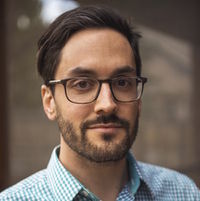
Daniel Larremore - Santa Fe Institute
Daniel Larremore is an Omidyar Fellow at the Santa Fe Institute. His research develops statistical and inferential methods for analyzing large-scale network data, and uses those methods to solve applied problems in diverse domains, including public health and academic labor markets. Prior to joining the Santa Fe Institute he was a post-doctoral fellow at the Harvard T.H. Chan School of Public Health 2012-2015. He obtained his Ph.D. in Applied Mathematics from the University of Colorado at Boulder in 2012, and holds an undergraduate degree from Washington University in St. Louis.
website
Abstract
Networks in the Wild: Generative Models and Multilayer Networks
Generative models for networks are exactly what they sound like: models that generate network data. We can draw samples and simulate data from generative models, but we can also reverse the process, taking a real dataset and finding the parameters that best describe it. This parameter inference process can be extremely useful in understanding and problem solving. To illustrate this point, we will focus on the use of generative models—correctly and incorrectly—in analysis of the ongoing evolutionary battle between malaria parasites and the human immune system. However, in this system, as with others, what appears at first to be a single network is better viewed as a "multilayer" network, in which the same nodes can be connected in different ways, or in different layers. We'll discuss multilayer networks and key multilayer concepts like community structure, versatility, interdependence, and resilience to disruption.
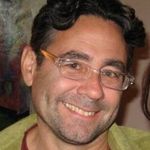
Neo Martinez - University of Arizona
Neo Martinez' Lab investigates the structure and function of complex networks, especially ecological networks involving feeding relationships, population dynamics, evolution and interactions with humans. He is a broadly trained interdisciplinary ecologist who employs empirically and theoretically oriented computational tools including simulations, visualizations, informatics, and games to elucidate the complex interdependencies of all life on earth.
website
Abstract
Understanding and Sustaining Socio-Ecological Networks
Ecosystems are iconic complex systems. Ecologists have long searched for scientific regularities among the spectacular diversity of species and habitats within which organisms live, reproduce and evolve. However, instead of discovering unifying scientific laws and regularities, ecology has in many cases devolved into a Balkanized collection of subdisciplines lacking the unified ecological theory needed to broadly understand ecological and socio-ecological systems. This presentation shows how a network approach to the structure and dynamics of socio-ecosystems based on consumer-resource relationships helps address these challenges. This approach has helped discover remarkably consistent architectural patterns in both feeding and pollination networks as well as mechanisms responsible for these patterns. Additionally, the approach has integrated the nonlinear bioenergetics of organisms growing and consuming one another to understand and predict socio-ecological dynamics including the effects of species loss (e.g., extinction) and exploitation (e.g., fishing). Similar network approaches have been productively applied to other biological (e.g., cell metabolism) and social (e.g., garment industry) systems. Overall, network approaches to biological and social systems based on consumer-resource interactions helps provide a powerful mechanistic basis for sustaining the socio-ecological networks upon which we all depend.
Hernan Makse - City College of New York, New York City
Hernan Maksi runs the Complex Networks and Soft Matter Lab of Hernan Makse at the Levich Institute and Department of Physics of City College of New York. The lab group is interested in the theoretical understanding of Complex Systems and Data Science from a Statistical Physics viewpoint. The researchers are working towards the development of new emergent laws for complex systems, ranging from the brain and biological networks to social systems. They treat these systems from a unified theoretical approach using concepts from statistical mechanics of out-of-equilibrium complex networks, optimization theory, machine learning and big-data science that they have developed in their studies of social networks and disordered systems in physics. In parallel, they also focus on the study of jammed matter, spanning from granular materials, colloidal suspensions and dense emulsions to glasses, in search of unifying theoretical frameworks. The researchers focus on the theoretical and computational approaches in parallel with experiments.
website
Abstract
Complex Networks
The frame of interconnections in complex networks is hinged on a specific set of nodes, called influencers, much smaller than the total size, which if activated would cause the spread of information to the whole network; or, if deactivated would cause its collapse. Understanding the dynamics of this small set of influencers holds the key to understanding crucial problems in network science: from opinion spreading in social networks to the brain. In this talk we will discuss several applications of network science and influencers ranging from the development of a theory of influence, to predicting election outcomes using machine learning, to how your position in the social network determines your socio-economic status to the structure of the brain.

Ole Peters - SFI External Faculty and Resident Fellow - London Mathematical Laboratory
Ole Peters's work focuses on stochastic processes that are non-ergodic. This means that long-time averages do not converge to expectation values. Such processes are of practical relevance because they form the basis of economic theory. However, their non-ergodic nature has not been fully explored.
Prior to becoming interested in the foundations of economics I worked on atmospheric convection and far-from equilibrium critical phenomena in statistical mechanics.
Extra-curricular: A fan of anything to do with oceans.
[website]
Abstract
Cooperation Networks
Networks must have some reason for forming. One such reason is cooperation: nodes cooperate by sharing resources through edges. But cooperation itself is a puzzle in evolutionary biology. Why cooperate, why should two entities share resources if the only poorer entity seems to benefit? The puzzle exists because the analysis is carried out using expectation values, or equivalently assuming ergodicity and global conservation of resources. Expectation values are 17th-century mathematics, whereas new techniques of time-averaging in non-stationary processes became available, conceptually from the 1870s onward, with tremendous technical progress since about 1980. By solving the cooperation puzzle we explore what kinds of cooperation networks might form.

Bill Rand - Poole College of Management - NC State
William Rand examines the use of computational modeling techniques, such as agent-based modeling, machine learning, network analysis, natural language processing, and geographic information systems, to help understand and analyze complex systems, such as the diffusion of information, organizational learning, and economic markets.
He also works to develop methods, create pedagogy, and build frameworks to allow researchers and practitioners to use analytics and data-intensive methods in their own work. He has received funding for his research from the NSF, DARPA, ARL, Google, WPP, and the Marketing Science Institute. His work has been published in JM, JMR, IJRM, Management Science, and JOM. He received his doctorate in Computer Science from the University of Michigan in 2005 and prior to coming to NCSU was at the University of Maryland for eight years.
website
Abstract
Building Agent-Based Decision Support Systems for Network-based Communication
Agent-Based models on networks provide a powerful tool for understanding human, social dynamics, but this understanding can also be applied to help managers make concrete decisions. In this talk, we will explore an application of using agent-based models on networks to design and implement word-of-mouth (WOM) marketing programs. We will explore not only a general framework for the construction of a social network-level individual interaction model, but how to use this model to create a decision support system (DSS) for WOM. The framework presents a set of guidelines and recommendations to: (1) involve stakeholders, (2) follow a data-driven iterative modeling approach, (3) increase validity through automated calibration, and (4) understand the DSS behavior. We will explore an example in freemium apps, where we model how premium users discuss the product with their social network and promote the viral adoption of the product. After its validation, the agent-based DSS forecasts the aggregate number of premium sales over time and the most likely users to become premium in a near future. The experiments show how the DSS can help managers by forecasting premium conversions and increasing the number of premiums via targeting and reward policies.

